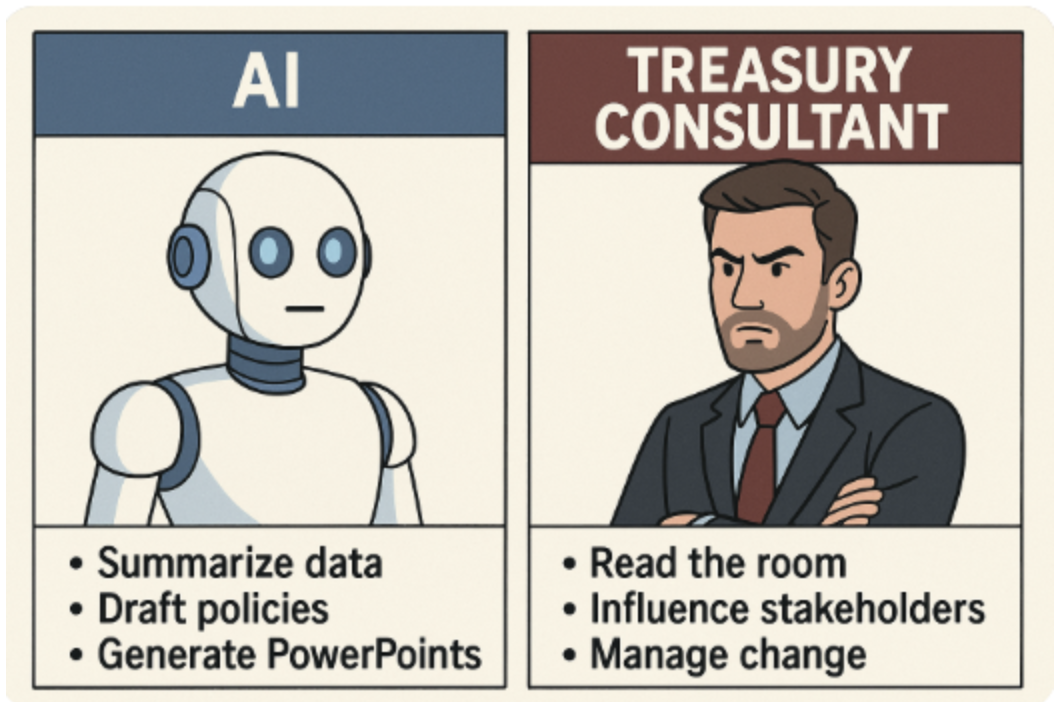The Reality today
Let’s be honest: most treasurers don’t spend their days shaping M&A strategy or influencing the boardroom. They’re deep in the weeds of cash positioning, hedge accounting, bank reconciliations, and payment files. Important work? Yes, but, unfortunately not the kind that gets you recognised as a true partner to the CFO.
The ambition is there. Treasurers want to be more strategic. In most cases, the barrier remains constant: capacity. Too much time spent keeping the machine running, not enough time left for forward-looking decisions.
The operational trap
We’ve seen it time and again in projects: treasury teams overloaded with manual work. Reporting eats up days. Variance analysis never ends. Bank portals multiply. And then there are the ad-hoc “can you just…” requests from finance. Before you know it, the week is gone.
It’s no wonder treasury ends up reactive instead of proactive.
What strategic treasury looks like
When treasury breaks out of this cycle, things change fast. Strategic treasury means:
- Challenging the CFO on how to deploy liquidity most effectively.
- Bringing insights to the table on funding, capital structure, and risk.
- Anticipating regulatory or market shifts before they bite.
- Acting as a navigator for growth, not just an operator in the background.
That’s the moment when treasury isn’t just “The department that moves money around” but becomes a genuine co-pilot in financial decision-making.
How to get there
Here’s the paradox: to be more strategic, you first need to win back time.
Sometimes that means automating reporting or streamlining bank connectivity. Occasionally, bringing in extra hands for operations so the core team can focus on higher-value work. And at other times, having an experienced consultant step in as a sparring partner – someone who’s seen different setups and can point out blind spots. Or, sometimes, just adding permanent team capacity but that might take longer to get.
That’s exactly the type of work we do with Pecunia. Not by dropping a generic framework on a client, but by looking at the biggest pain point in treasury and tackling that first. Free up capacity where it hurts most, and suddenly strategy isn’t an abstract goal, it’s simply the next natural step.
The bottom line
Some Treasurers are not finance’s strategic partner… yet. But the gap is rarely about ambition or skill. It’s about time and headspace. Solve the operational overload, and the door to strategy opens quickly.
The organisations that get this right don’t just run a smoother treasury. They give their CFO a partner who can influence the bigger financial story. And that’s where the real value is created.













